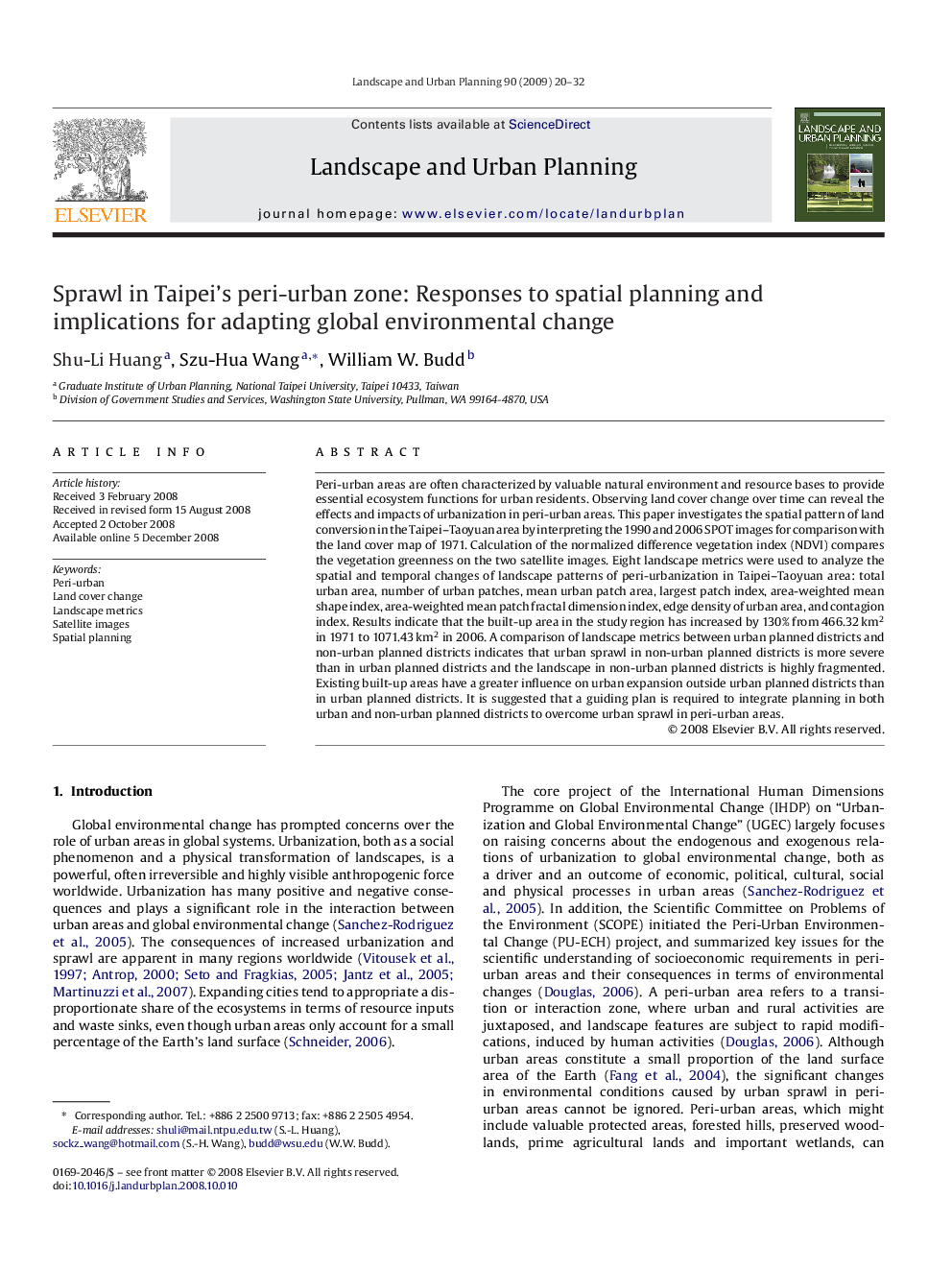| Article ID | Journal | Published Year | Pages | File Type |
|---|---|---|---|---|
| 1050309 | Landscape and Urban Planning | 2009 | 13 Pages |
Peri-urban areas are often characterized by valuable natural environment and resource bases to provide essential ecosystem functions for urban residents. Observing land cover change over time can reveal the effects and impacts of urbanization in peri-urban areas. This paper investigates the spatial pattern of land conversion in the Taipei–Taoyuan area by interpreting the 1990 and 2006 SPOT images for comparison with the land cover map of 1971. Calculation of the normalized difference vegetation index (NDVI) compares the vegetation greenness on the two satellite images. Eight landscape metrics were used to analyze the spatial and temporal changes of landscape patterns of peri-urbanization in Taipei–Taoyuan area: total urban area, number of urban patches, mean urban patch area, largest patch index, area-weighted mean shape index, area-weighted mean patch fractal dimension index, edge density of urban area, and contagion index. Results indicate that the built-up area in the study region has increased by 130% from 466.32 km2 in 1971 to 1071.43 km2 in 2006. A comparison of landscape metrics between urban planned districts and non-urban planned districts indicates that urban sprawl in non-urban planned districts is more severe than in urban planned districts and the landscape in non-urban planned districts is highly fragmented. Existing built-up areas have a greater influence on urban expansion outside urban planned districts than in urban planned districts. It is suggested that a guiding plan is required to integrate planning in both urban and non-urban planned districts to overcome urban sprawl in peri-urban areas.
